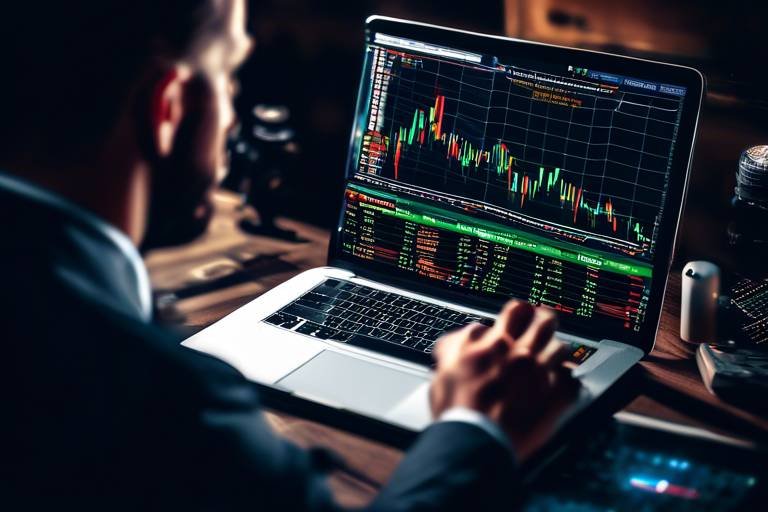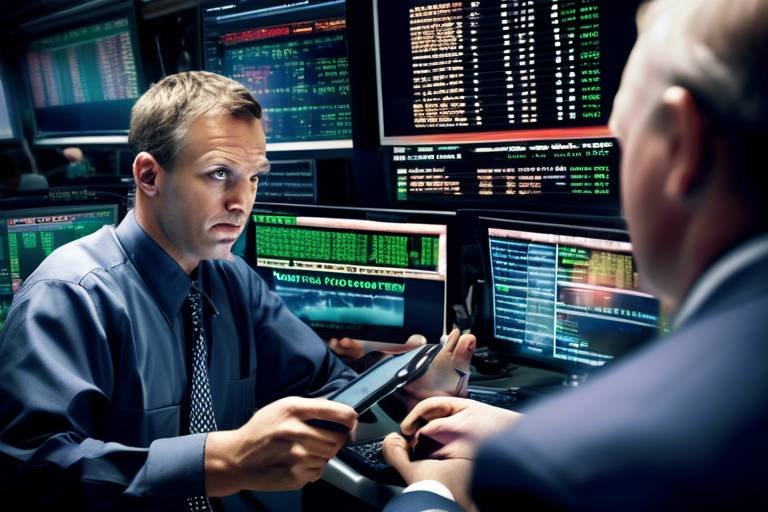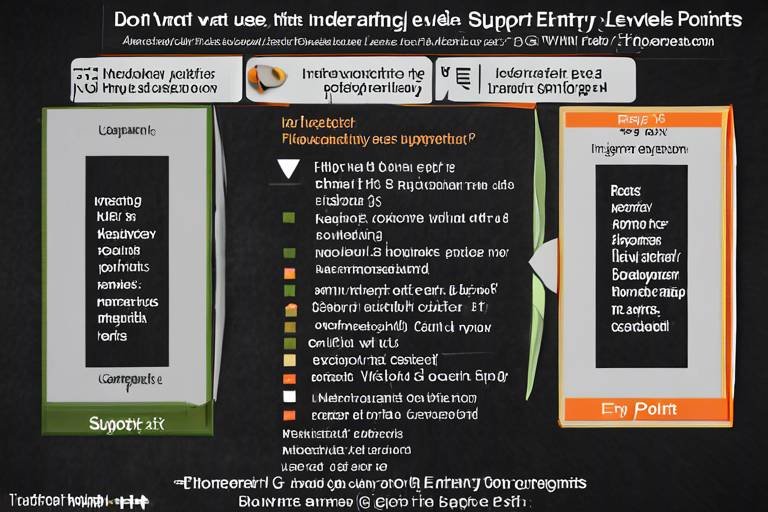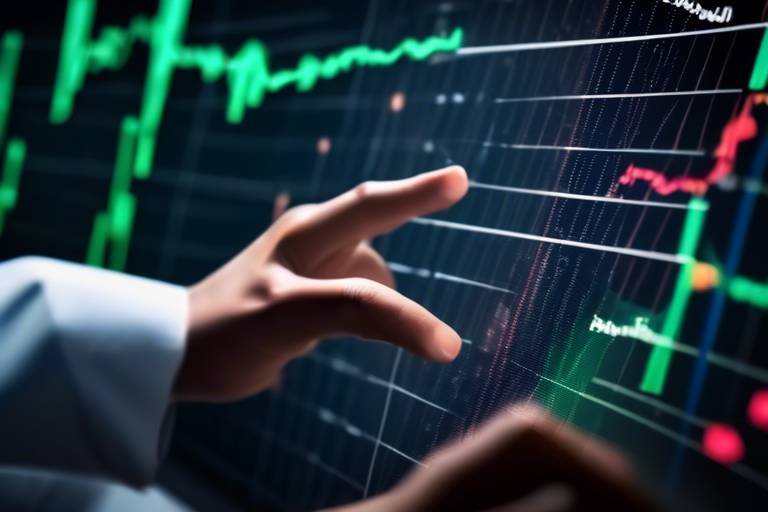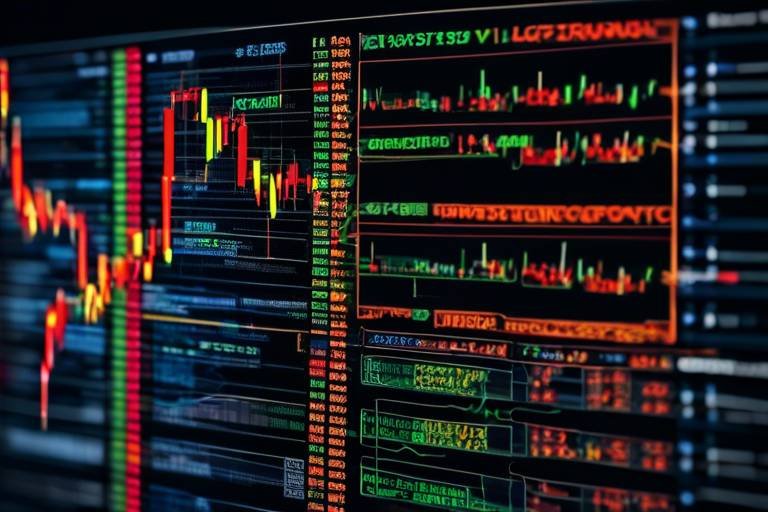How to Optimize Your Trading Strategy Using Data
In today's fast-paced financial markets, traders are constantly seeking ways to gain an edge over their competitors. One of the most effective methods to enhance trading strategies is through data analysis. By leveraging data, traders can make more informed decisions, anticipate market movements, and ultimately improve their trading outcomes. But where do you start? How can you harness the power of data to refine your trading approach? This article will guide you through the essential components of data optimization in trading, focusing on techniques, tools, and insights that can lead to better results.
To begin with, it's crucial to understand that data in trading is not just about numbers and charts; it's about insights and patterns. Traders need to identify the types of data that are most relevant to their strategies, which can include historical price data, trading volumes, economic indicators, and even social sentiment. By analyzing these data points, traders can uncover trends and signals that may not be immediately apparent, leading to more strategic decision-making.
Moreover, the landscape of trading is continuously evolving, and so too are the tools and techniques available for data analysis. From sophisticated algorithms to user-friendly software, traders now have access to a plethora of resources that can help them interpret data more effectively. The key is to stay informed and be willing to adapt your strategies based on the insights gained from data analysis.
In the following sections, we will explore the various aspects of optimizing your trading strategy using data, including key metrics for success, data analysis techniques, and the tools that can facilitate this process. Whether you're a seasoned trader or just starting out, understanding how to utilize data effectively can make a significant difference in your trading performance.

Understanding Data in Trading
Data plays a crucial role in the world of trading. It’s like the compass guiding a sailor through stormy seas; without it, traders can easily lose their way. In essence, data provides the insights necessary to make informed decisions, helping traders navigate the complexities of the financial markets. But what types of data should traders focus on? And how can they leverage this information for better market predictions? Let’s dive in!
First and foremost, traders should be aware of two primary types of data: historical data and real-time data. Historical data refers to past market information, such as price movements, volume, and trends. By analyzing this data, traders can identify patterns that may repeat in the future. Imagine trying to predict the weather without historical records of temperature and precipitation; it would be nearly impossible! Similarly, understanding historical data can significantly enhance a trader's ability to forecast market behavior.
On the flip side, real-time data is essential for making immediate trading decisions. This includes live price feeds, news updates, and economic indicators. In the fast-paced world of trading, having access to real-time data can mean the difference between a profitable trade and a missed opportunity. For instance, a trader who monitors real-time news feeds can react swiftly to sudden market changes, much like a firefighter responding to an emergency call.
Moreover, traders should also consider the importance of sentiment data, which gauges the overall attitude of market participants. This type of data can be derived from social media, financial news, and trading forums. By understanding the sentiment surrounding a particular asset, traders can gain valuable insights into potential market movements. It’s akin to reading the mood of a crowd before making a decision to enter a room; if the vibe is off, it might be wise to hold back.
To effectively utilize these data types, traders can employ various analytical tools and techniques. For example, they can use data visualization tools to create charts and graphs that make complex data easier to understand. By visualizing data, traders can quickly spot trends and anomalies, allowing for more informed decision-making. A well-designed chart can reveal patterns that raw data alone might obscure, making it an invaluable asset in a trader's toolkit.
In summary, understanding and leveraging different types of data is fundamental for successful trading. By focusing on historical data for pattern recognition, real-time data for immediate decisions, and sentiment data for market sentiment analysis, traders can significantly improve their strategies. The ability to interpret and act on data effectively can lead to better market predictions and, ultimately, improved trading outcomes. So, are you ready to harness the power of data in your trading journey?

Key Metrics for Trading Success
When it comes to trading, understanding the key metrics that drive success is like having a secret map to treasure. These metrics not only guide your trading decisions but also help you evaluate your performance over time. By focusing on the right indicators, you can make informed choices that can significantly enhance your profitability and reduce risks. So, what exactly should you be tracking?
First and foremost, you need to keep an eye on your profitability metrics. These include figures such as your overall profit margin, win rate, and average return per trade. Understanding these metrics allows you to gauge how well your trading strategy is performing. For instance, if your win rate is below 50%, it might be time to reassess your approach. Remember, it’s not just about how often you win, but how much you win when you do.
Next up are the risk management metrics, which are essential for protecting your capital. Effective risk management involves understanding how much you are willing to lose on each trade and adjusting your strategy accordingly. Key metrics in this category include:
- Value at Risk (VaR): This metric estimates the maximum potential loss over a specific time period, given a certain confidence level. It’s a crucial tool for assessing the risk of your portfolio.
- Position Sizing: Knowing how much to invest in a trade based on your overall capital and risk tolerance is vital for long-term success.
Another critical aspect is the performance evaluation metrics. These metrics help you assess your trading performance and identify areas for improvement. The Sharpe Ratio is one of the most widely used performance metrics. It measures the risk-adjusted return of your investments, helping you understand how much return you’re getting for the risk you’re taking. A higher Sharpe Ratio indicates a more favorable risk-return profile, making it an essential metric to track.
To sum up, understanding and tracking these key metrics can provide you with valuable insights into your trading performance. By regularly evaluating your profitability, risk management, and overall performance, you can refine your trading strategy and make better-informed decisions moving forward. It’s like tuning a musical instrument; with the right adjustments, you can create a symphony of successful trades.
In the ever-evolving world of trading, metrics are your compass. They guide you through the fog of market fluctuations and help you navigate toward success. So, whether you're a seasoned trader or just starting, make sure to incorporate these key metrics into your trading strategy for optimal results.
Q: What is the most important metric to track in trading?
A: While all metrics are important, many traders consider the Sharpe Ratio as a key indicator of risk-adjusted performance. It helps you understand how well your returns compensate for the risks you take.
Q: How often should I review my trading metrics?
A: It's advisable to review your trading metrics regularly, such as weekly or monthly, depending on your trading style. Frequent evaluations allow you to make timely adjustments to your strategy.
Q: Can I use metrics for automated trading systems?
A: Absolutely! Many automated trading systems incorporate various metrics to optimize trading strategies and execute trades based on predefined criteria.

Risk Management Metrics
Effective risk management is the backbone of successful trading. Without it, even the most promising strategies can falter, leading to significant losses. Risk management metrics help traders gauge their exposure to potential losses while providing a framework to make informed decisions. By understanding these metrics, traders can effectively balance risk and reward, ensuring they stay in the game even when the market turns against them.
One of the most crucial aspects of risk management is the ability to quantify potential losses. This is where metrics like Value at Risk (VaR) come into play. VaR provides a statistical measure that estimates how much a set of investments might lose, given normal market conditions, over a set time period. For example, if a trader has a VaR of $1,000 over one day, there is a 95% confidence that the losses will not exceed this amount in a single day. Understanding VaR allows traders to set appropriate limits on their positions and manage their portfolios more effectively.
Another vital metric is the Sharpe Ratio, which measures the performance of an investment compared to a risk-free asset, after adjusting for its risk. A higher Sharpe Ratio indicates that the return is more favorable relative to the risk taken. For traders, this means they can evaluate whether the potential returns are worth the risks associated with a particular strategy. By calculating the Sharpe Ratio, traders can compare different strategies and choose the one that offers the best risk-adjusted return.
| Risk Metric | Description | Importance |
|---|---|---|
| Value at Risk (VaR) | Estimates potential loss in value of an asset or portfolio over a defined period for a given confidence interval. | Helps in setting limits on potential losses. |
| Sharpe Ratio | Measures risk-adjusted return by comparing excess return to its standard deviation. | Assists in evaluating the performance of different trading strategies. |
In addition to these metrics, it’s essential to monitor other factors that can influence risk, such as market volatility and liquidity. Traders should always keep an eye on how these elements can affect their positions. For instance, during periods of high volatility, the potential for loss increases, and traders may need to adjust their strategies accordingly. Likewise, understanding liquidity helps traders ensure they can enter and exit positions without significant price impact, which is crucial for managing risk effectively.
Ultimately, integrating these risk management metrics into your trading strategy is not just about avoiding losses; it’s about creating a sustainable trading approach that allows for growth and profitability over time. By regularly assessing your risk exposure and adjusting your strategies based on these metrics, you can navigate the unpredictable waters of trading with confidence and skill.
- What is the importance of risk management in trading?
Risk management is crucial as it helps traders minimize potential losses while maximizing gains, ensuring long-term success. - How do I calculate Value at Risk (VaR)?
VaR can be calculated using historical data, variance-covariance method, or Monte Carlo simulations, depending on the complexity of the portfolio. - What does a high Sharpe Ratio indicate?
A high Sharpe Ratio indicates that a strategy is generating good returns for the level of risk taken, making it a more attractive option for traders.

Value at Risk (VaR)
The concept of is a cornerstone in the realm of risk management for traders and investors alike. Essentially, VaR provides a statistical measure that quantifies the potential loss in value of a portfolio over a defined period for a given confidence interval. Imagine you're on a roller coaster; VaR helps you understand the steepest drop you might face during your ride, ensuring you're prepared for the thrill without being thrown off balance.
To calculate VaR, you need to determine three key components: the time frame, the confidence level, and the potential loss amount. For instance, you might want to know the maximum loss you could incur on a $1 million investment over a one-day period with a 95% confidence level. This means that, statistically speaking, there is a 5% chance that your losses could exceed this amount within that time frame.
There are several methods to calculate VaR, including:
- Historical Method: This approach analyzes historical returns to estimate potential future losses. It’s like looking at past roller coaster rides to predict how scary the next one will be!
- Variance-Covariance Method: This method assumes that returns are normally distributed and uses the mean and standard deviation of portfolio returns to calculate VaR. Think of it as using a mathematical formula to predict your ride's twists and turns.
- Monte Carlo Simulation: This advanced technique uses random sampling and statistical modeling to estimate potential losses. It’s akin to running multiple simulations of your ride to see how it could play out under different scenarios.
Once you’ve calculated VaR, interpreting it correctly is vital. A VaR of $50,000 at a 95% confidence level indicates that there is a 5% chance that your portfolio could lose more than $50,000 over the specified time frame. This insight allows traders to make informed decisions about their risk exposure and adjust their strategies accordingly. It’s like having a safety net—knowing the maximum potential drop can help you decide whether to hold on tight or let go.
However, it’s essential to remember that while VaR is a valuable tool, it has its limitations. For instance, it does not provide information about the size of losses beyond the VaR threshold. In our roller coaster analogy, while you know the steepest drop, you might still be surprised by how far you plunge if the ride takes an unexpected turn. Therefore, incorporating other risk management strategies alongside VaR is crucial for a comprehensive approach to trading.
In conclusion, mastering Value at Risk is fundamental for any trader aiming to navigate the turbulent waters of financial markets. By understanding and applying VaR, you can enhance your risk management practices and make more informed trading decisions, ensuring that your investment journey remains both thrilling and secure.
What is the main purpose of Value at Risk (VaR)?
The main purpose of VaR is to measure the potential loss in value of an investment portfolio over a specified time frame, providing traders with crucial insights into their risk exposure.
How is VaR calculated?
VaR can be calculated using various methods, including the historical method, variance-covariance method, and Monte Carlo simulation, each offering different advantages based on the data available.
What are the limitations of using VaR?
While VaR is a useful risk management tool, it has limitations, such as not providing information about potential losses beyond the VaR threshold and assuming normal distribution of returns, which may not always be the case.
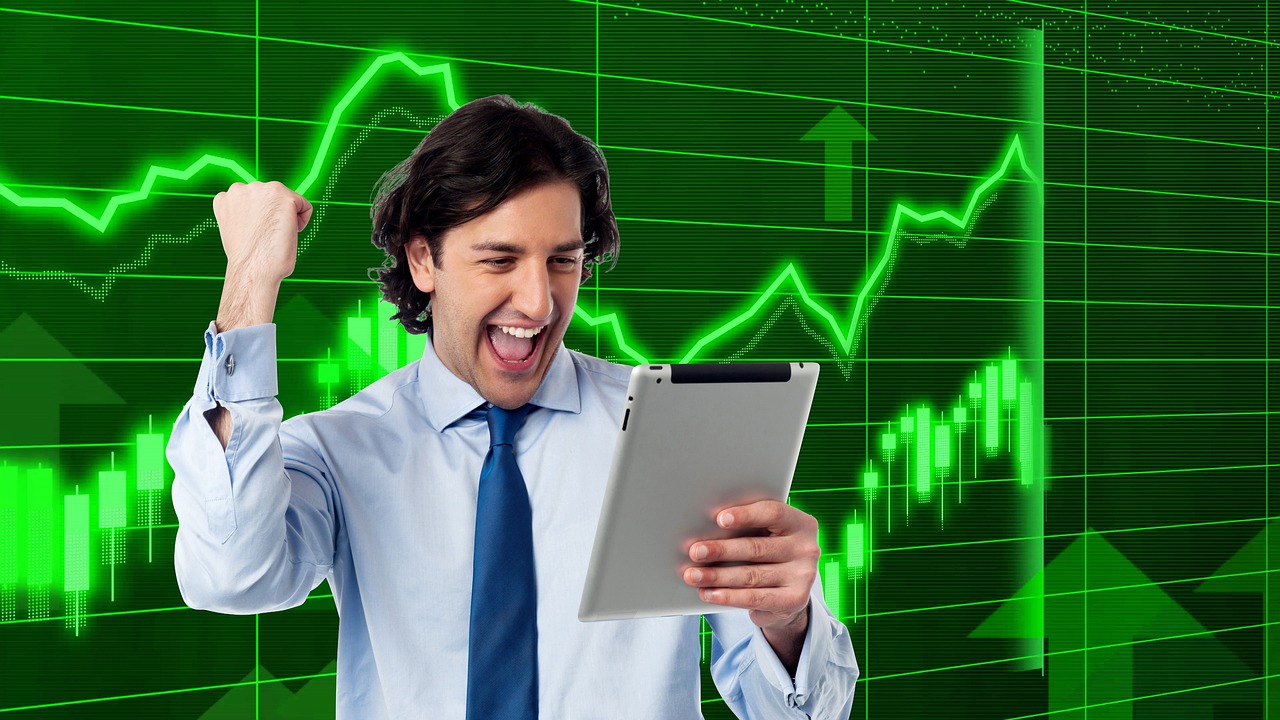
Sharpe Ratio
The is a vital metric in the trading world, often regarded as a benchmark for evaluating the performance of an investment compared to its risk. Imagine you’re at a carnival, and you have two choices: a thrilling roller coaster that might make you feel exhilarated but could also leave you feeling a bit queasy, or a gentle carousel that offers a smooth ride but no real excitement. The Sharpe Ratio helps you make sense of these choices in the financial market by providing a way to measure how much return you’re getting for each unit of risk you take on.
To calculate the Sharpe Ratio, you can use the following formula:
Sharpe Ratio (Rp - Rf) / σp
Where:
- Rp Return of the portfolio
- Rf Risk-free rate of return
- σp Standard deviation of the portfolio’s excess return
This formula essentially tells you how much additional return you’re earning for the extra volatility you’re enduring. A higher Sharpe Ratio indicates that you are receiving more return per unit of risk, which is a good sign for any trader. For instance, if you have two different trading strategies, you can use the Sharpe Ratio to determine which one is more efficient. A strategy with a Sharpe Ratio of 1.5 is generally considered better than one with a ratio of 1.0, as it indicates that the first strategy is yielding more return for the same level of risk.
However, it’s essential to remember that while the Sharpe Ratio is a powerful tool, it should not be the sole metric you rely on. It’s like using a single compass direction to navigate through a dense forest; while it can guide you, you still need to consider other factors such as market conditions and personal risk tolerance. Additionally, the Sharpe Ratio can sometimes be misleading, especially in volatile markets or when dealing with non-normally distributed returns.
In summary, the Sharpe Ratio is a crucial component of any trader's toolkit. It allows you to assess the performance of your trading strategies in a way that factors in risk, making it easier to identify which approaches are genuinely delivering value. By understanding and applying this metric, you can enhance your decision-making process and potentially improve your trading outcomes.
What is a good Sharpe Ratio?
A Sharpe Ratio above 1.0 is generally considered acceptable, while a ratio above 2.0 is seen as excellent. However, the context of the investment and market conditions should also be taken into account.
Can the Sharpe Ratio be negative?
Yes, a negative Sharpe Ratio indicates that the risk-free rate is higher than the portfolio's return, suggesting that the investment is not providing sufficient returns for the risk taken.
How often should I calculate the Sharpe Ratio?
It's advisable to calculate the Sharpe Ratio periodically, especially after significant market movements or changes in your trading strategy, to ensure that your performance assessment remains relevant.

Performance Evaluation Metrics
When it comes to trading, understanding how well your strategies are performing is crucial. Just like a chef tastes their dish before serving, traders must evaluate their performance metrics to ensure they are on the right track. Performance evaluation metrics provide insights into what’s working and what isn’t, allowing for informed adjustments that can lead to improved outcomes. So, what are the key metrics that every trader should be aware of?
One of the most important metrics is the Win Rate. This metric indicates the percentage of trades that result in a profit. A high win rate can give traders confidence, but it’s essential to remember that it’s not the only factor to consider. A trader might have a win rate of 70%, but if their losing trades are significantly larger than their winning trades, their overall profitability could still be negative.
Another vital metric is the Profit Factor, which is calculated by dividing the total profit by the total loss. A profit factor greater than 1 indicates that your winning trades are outweighing your losing ones. For example, if your total profits amount to $10,000 and your total losses are $5,000, your profit factor would be 2. This means for every dollar you lose, you’re making two dollars, which is a good sign!
Maximum Drawdown is another critical metric that traders should monitor. It measures the largest drop from a peak to a trough in your trading account balance. This metric helps traders understand the worst-case scenario they might face and can guide them in setting stop-loss orders effectively. For instance, if your account balance peaked at $20,000 and then dropped to $15,000, your maximum drawdown would be $5,000. Keeping this in check is essential for long-term trading success.
In addition to these metrics, traders should also consider the Average Trade Duration. This metric gives insights into how long trades are held before they are closed. Understanding whether you are a day trader holding positions for minutes or a swing trader keeping trades for days can help tailor your strategy accordingly. For example, if your average trade duration is only a few minutes, you might want to focus on high-frequency trading strategies.
To make it easier to visualize these metrics, here’s a simple table summarizing them:
| Metric | Definition | Importance |
|---|---|---|
| Win Rate | Percentage of profitable trades | Indicates overall trading success |
| Profit Factor | Total profits divided by total losses | Measures profitability of the trading strategy |
| Maximum Drawdown | Largest drop from peak to trough | Helps assess risk tolerance |
| Average Trade Duration | Average time a trade is held | Informs strategy type (day vs. swing trading) |
By keeping an eye on these performance evaluation metrics, traders can make data-driven decisions that lead to better trading outcomes. It’s like having a roadmap for your trading journey; without it, you might find yourself lost in the vast market landscape. So, take the time to analyze these metrics regularly, and don’t hesitate to tweak your strategies based on what the data is telling you!
- What is the importance of performance evaluation metrics?
Performance evaluation metrics help traders assess the effectiveness of their trading strategies, allowing them to make informed adjustments for better results. - How often should I review my trading performance?
It’s advisable to review your performance metrics regularly, such as weekly or monthly, to identify trends and make timely adjustments. - Can I use performance metrics for different trading styles?
Absolutely! Performance metrics can be tailored to fit any trading style, whether you are a day trader, swing trader, or long-term investor.

Data Analysis Techniques
When it comes to optimizing your trading strategy, are your best friends. Think of data analysis as the magnifying glass that helps you see the intricate details of market movements that might otherwise go unnoticed. Without these techniques, you’re essentially trading blindfolded, relying on gut feelings rather than solid evidence. So, what are these techniques, and how can they help you? Let’s dive in!
One of the most popular methods is technical analysis. This technique involves examining price movements and trading volumes to forecast future market behavior. Traders use various technical indicators—like moving averages, Relative Strength Index (RSI), and Bollinger Bands—to identify trends and reversals. Imagine you're a detective; each indicator is a clue that helps you piece together the story of the market. By analyzing these clues, you can make more informed decisions about when to enter or exit a trade.
On the flip side, we have fundamental analysis. While technical analysis looks at the charts, fundamental analysis digs deeper into the underlying factors that influence market movements. This includes economic indicators such as GDP growth, employment rates, and inflation, as well as news events that can sway market sentiment. For example, if a country's unemployment rate drops significantly, it could signal a strengthening economy, prompting traders to buy that country's currency. Think of fundamental analysis as understanding the bigger picture, the backdrop against which all market activity unfolds.
To effectively employ these data analysis techniques, traders often rely on a combination of both approaches. This hybrid strategy allows for a more comprehensive view of the market, enabling traders to make decisions based on both historical price action and current economic conditions. By merging these insights, traders can develop a robust trading strategy that adapts to changing market dynamics.
Furthermore, utilizing advanced data analysis software can streamline this process. These tools can automate data collection and analysis, providing real-time insights that are crucial for making timely decisions. By integrating data analysis software into your trading toolkit, you can enhance your ability to interpret market data and improve your overall trading performance.
In summary, mastering data analysis techniques is essential for any trader looking to optimize their trading strategy. Whether you choose to focus on technical indicators, fundamental factors, or a blend of both, the key is to remain adaptable and informed. After all, in the world of trading, knowledge is power, and the more you understand the data, the better equipped you are to navigate the markets.

Technical Analysis
When it comes to trading, is like having a crystal ball that helps you predict future price movements based on historical data. Imagine you’re trying to navigate a vast ocean of market trends—without a map, you might end up lost. Technical analysis provides that map, allowing traders to identify patterns, trends, and potential reversal points by studying price charts and various indicators. The beauty of this approach lies in its ability to transform seemingly chaotic market data into actionable insights.
At its core, technical analysis focuses on price movements and trading volume. Traders utilize a variety of tools to interpret this data, including charts, trend lines, and indicators. One of the most popular types of charts used is the candlestick chart, which not only shows the opening, closing, high, and low prices for a given period but also provides visual cues about market sentiment. For instance, a series of bullish candlesticks might suggest that buyers are in control, while bearish candlesticks might indicate the opposite.
Here are some key indicators that traders often rely on:
- Moving Averages: These help smooth out price data over a specific period and can signal trends. For example, a 50-day moving average crossing above a 200-day moving average can indicate a bullish trend.
- Relative Strength Index (RSI): This momentum oscillator measures the speed and change of price movements, helping traders identify overbought or oversold conditions.
- Bollinger Bands: These bands expand and contract based on market volatility, providing insights into potential price breakouts or reversals.
But how do traders decide which indicators to use? It often comes down to personal preference and the specific market conditions they are analyzing. Some traders prefer to use a combination of indicators to confirm their predictions, while others might stick to a single, reliable indicator that aligns with their trading strategy.
Moreover, technical analysis isn't just about looking at numbers; it's about interpreting the story those numbers tell. For instance, if a stock has been consistently rising but suddenly shows signs of a reversal, a savvy trader might take this as a signal to either cash out or adjust their strategy. It’s like reading the mood of a crowd; understanding the underlying sentiment can give you a significant edge in making informed trading decisions.
As you dive deeper into the world of technical analysis, remember that no method is foolproof. Market conditions can change rapidly, and external factors can influence price movements in unpredictable ways. Therefore, it’s essential to combine technical analysis with other forms of analysis, such as fundamental analysis, to create a well-rounded trading strategy.
In summary, technical analysis is a powerful tool that can help traders make sense of market data and enhance their trading strategies. By mastering the various indicators and understanding how to interpret price movements, you can navigate the trading landscape with greater confidence and precision. So, whether you’re a seasoned trader or just starting, embracing technical analysis can undoubtedly elevate your trading game.
- What is the main purpose of technical analysis?
Technical analysis aims to evaluate and predict future price movements based on historical market data and trends. - Can technical analysis be used for long-term investing?
Yes, while often used for short-term trading, technical analysis can also help identify long-term trends and investment opportunities. - Is technical analysis reliable?
While technical analysis can provide valuable insights, it is not foolproof. It should be used in conjunction with other analyses and risk management strategies.
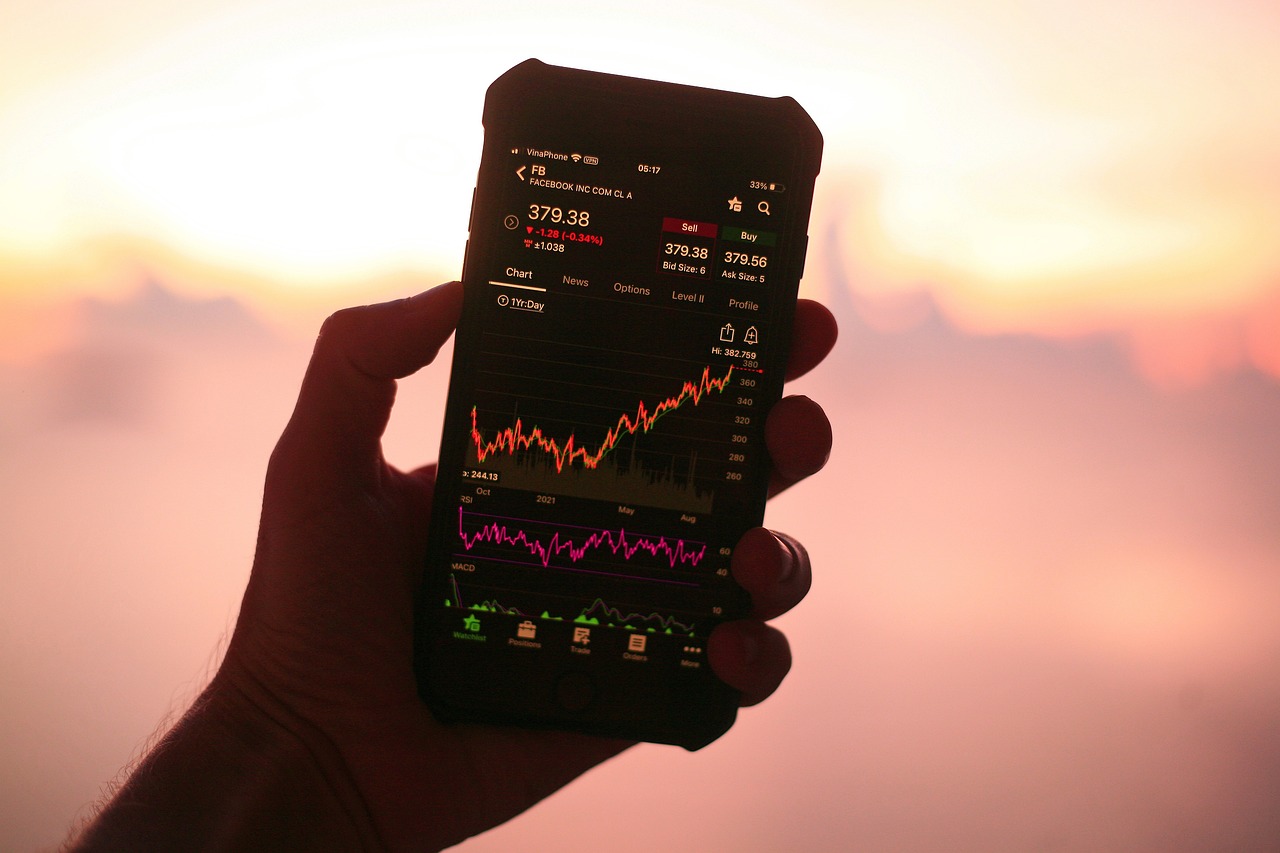
Fundamental Analysis
When it comes to trading, understanding the underlying forces that drive market movements is crucial. This is where comes into play. Unlike technical analysis, which focuses on price patterns and trends, fundamental analysis digs deeper into the economic, financial, and other qualitative and quantitative factors that can influence the value of an asset. Think of it as the detective work of trading—you're not just looking at the surface; you're uncovering the story behind the numbers.
At its core, fundamental analysis involves examining various economic indicators and news events that can impact market conditions. Traders who master this technique can anticipate price movements based on real-world events. For instance, consider how a country’s unemployment rate or interest rate decisions can sway investor sentiment. A rise in unemployment often signals economic weakness, which can lead to a decline in stock prices. Conversely, positive news like a surge in consumer spending can indicate economic strength, potentially boosting asset values.
Some key indicators to focus on include:
- Gross Domestic Product (GDP): This measures the overall economic output and health of a country. A growing GDP often correlates with rising stock prices.
- Inflation Rates: High inflation can erode purchasing power, affecting consumer behavior and business profits.
- Interest Rates: Changes in interest rates can significantly impact borrowing costs and consumer spending, influencing market dynamics.
- Employment Data: Metrics like the unemployment rate and job creation figures provide insights into economic health.
By analyzing these indicators, traders can gain a clearer picture of the market landscape. However, it’s not just about crunching numbers. Understanding the context behind the data is equally important. For example, a sudden spike in oil prices due to geopolitical tensions can have ripple effects across multiple sectors, from transportation to consumer goods.
Furthermore, keeping an eye on news releases and economic reports is essential. Traders often use an economic calendar to track when important data will be released, allowing them to prepare their strategies accordingly. Being ahead of the curve can mean the difference between capitalizing on a trend and getting caught off guard.
In summary, fundamental analysis is about more than just numbers; it’s about understanding the bigger picture. By combining economic indicators with current events, traders can make informed decisions that align with market realities. This holistic approach can significantly enhance trading strategies, leading to more successful outcomes in the ever-evolving financial markets.
1. What is the main difference between fundamental and technical analysis?
Fundamental analysis focuses on the economic and financial factors that influence asset values, while technical analysis looks at price movements and patterns to predict future market behavior.
2. How can I start incorporating fundamental analysis into my trading strategy?
Begin by familiarizing yourself with key economic indicators and regularly check economic calendars for important data releases. Analyzing news events and understanding their potential impact on the markets will also help you make informed trading decisions.
3. Are there specific tools for conducting fundamental analysis?
Yes, many financial news platforms and trading software provide access to economic calendars, news feeds, and analytical tools that can aid in fundamental analysis.
4. How often should I review fundamental data?
Regularly reviewing fundamental data is essential, especially during earnings seasons or before major economic reports. Staying updated will help you react quickly to market changes.

Utilizing Trading Tools
In today's fast-paced trading environment, having the right tools at your disposal can make all the difference between a successful trade and a costly mistake. With the vast amount of data available, traders need to leverage advanced tools to analyze information effectively and optimize their strategies. But what exactly are these trading tools, and how can they enhance your trading experience?
First off, let's talk about trading software. This is the backbone of any trader's toolkit. Trading software typically comes with a plethora of features designed to aid in data analysis, real-time market tracking, and even automated trading capabilities. Some of the most popular trading software includes platforms like MetaTrader, TradingView, and Thinkorswim. Each of these platforms offers unique functionalities such as:
- Charting Tools: Visual representations of market data, helping traders identify trends and patterns.
- Technical Indicators: Pre-built indicators that assist in analyzing price movements.
- Backtesting Features: Allowing traders to test their strategies against historical data.
Utilizing these features can significantly enhance your trading decisions. Imagine you're analyzing a stock's performance over the past year. With the right trading software, you can easily visualize price trends, apply different technical indicators, and even simulate how your trading strategy would have performed in that time frame. This level of insight is invaluable.
Next, we have automated trading systems. These systems take the guesswork out of trading by executing trades based on predefined criteria derived from data analysis. Think of them as your personal trading assistant that never sleeps. They can react to market changes in real-time, which is something even the most experienced traders might struggle to do consistently. The advantages of automated trading systems include:
- Speed: Automated systems can execute trades in milliseconds, capitalizing on fleeting opportunities.
- Emotion-Free Trading: By removing emotional decision-making, these systems help maintain discipline in trading.
- Backtesting Capability: Traders can test their strategies against past market data to evaluate their effectiveness.
However, it's essential to remember that while these tools can enhance your trading strategy, they are not foolproof. Market conditions can change rapidly, and no system can guarantee profits. Therefore, it’s crucial to combine these tools with your own analysis and intuition. Think of it as driving a car; the tools are like the dashboard indicators that help you navigate, but your judgment is what keeps you on the road.
As you delve deeper into the world of trading, consider exploring different tools that align with your trading style and goals. Whether you prefer day trading, swing trading, or long-term investing, there’s likely a tool out there that can enhance your approach and help you make informed decisions.
In conclusion, utilizing trading tools effectively can provide you with a competitive edge in the market. By integrating advanced trading software and automated systems into your strategy, you can harness the power of data analysis to make more informed trading decisions. Remember, the key is not just to have these tools at your disposal but to know how to use them to their fullest potential.
1. What are the best trading tools for beginners?
For beginners, user-friendly trading platforms like MetaTrader and TradingView are great options. They offer extensive educational resources and community support.
2. Can automated trading systems guarantee profits?
No, automated trading systems cannot guarantee profits. While they can optimize trading strategies, market conditions can change unexpectedly.
3. How do I choose the right trading software?
Consider factors such as ease of use, available features, customer support, and compatibility with your trading style when choosing trading software.
4. Is technical analysis better than fundamental analysis?
It depends on your trading strategy. Technical analysis focuses on price movements, while fundamental analysis looks at economic indicators. Many traders use a combination of both.

Trading Software
In the fast-paced world of trading, having the right tools at your fingertips can make all the difference between success and failure. is a game-changer for traders seeking to optimize their strategies. With advanced features that allow for in-depth data analysis, these platforms provide the insights needed to make informed decisions. Imagine having a personal assistant who tirelessly analyzes market trends, identifies potential opportunities, and alerts you to critical changes in real time. That's precisely what trading software does!
One of the primary benefits of trading software is its ability to handle vast amounts of data quickly and efficiently. Whether you're a day trader looking for the next big move or a long-term investor analyzing market fundamentals, the right software can help you process information at lightning speed. Most platforms come equipped with a variety of tools, including charting capabilities, technical indicators, and backtesting features that allow you to simulate trades based on historical data.
Among the popular trading software available today, several stand out due to their unique features and user-friendly interfaces. For instance, platforms like MetaTrader 4 and MetaTrader 5 are widely used for their extensive charting tools and automated trading capabilities. These platforms enable traders to create custom indicators and automate their trading strategies, freeing up valuable time to focus on other aspects of trading.
Another noteworthy mention is TradeStation, which offers an advanced analytical platform with powerful backtesting capabilities. This means you can test your trading strategies against historical data to see how they would have performed. It’s like having a crystal ball that shows you the potential success of your strategies before you invest real money!
Moreover, many modern trading software options come equipped with mobile applications, allowing traders to monitor their investments and execute trades on the go. This flexibility is crucial in today’s market, where opportunities can arise at any moment. Imagine being able to react instantly to market changes, even while you're out and about!
To summarize, the right trading software can significantly enhance your trading experience by providing:
- Advanced data analysis tools
- Real-time market alerts
- Automated trading capabilities
- User-friendly interfaces for easy navigation
- Mobile applications for trading on the go
Investing in quality trading software is not just a choice; it's a necessity for anyone serious about trading. As you explore different options, consider what features are most important to you and how they align with your trading style. After all, the right tools can be the difference between a profitable trading journey and one filled with missed opportunities.

Automated Trading Systems
In the fast-paced world of trading, time is money, and that's where Automated Trading Systems (ATS) come into play. These systems leverage advanced algorithms to execute trades based on predefined criteria, allowing traders to capitalize on market opportunities without the need for constant monitoring. Imagine a personal assistant who never sleeps, always ready to make the right move at the right moment—that's the essence of ATS.
Automated trading systems can analyze vast amounts of data in real-time, making them incredibly efficient. They can process market information, identify trends, and execute trades at lightning speed, often faster than any human could. This capability not only enhances trading efficiency but also reduces the emotional stress that often accompanies trading decisions. After all, who hasn’t made a hasty decision out of fear or greed?
One of the key advantages of using an ATS is the ability to backtest trading strategies. Traders can input historical data to see how their strategies would have performed in the past. This feature allows for fine-tuning and optimization of trading strategies before they are deployed in the live market. By analyzing past performance, traders can make informed decisions about which strategies are worth pursuing. The table below illustrates some popular ATS features:
| Feature | Description |
|---|---|
| Backtesting | Test strategies against historical data to evaluate performance. |
| Real-time Data Analysis | Analyze market data in real-time to identify trading opportunities. |
| Risk Management | Automatically apply risk management rules to protect capital. |
| Customizable Strategies | Allow traders to create and modify their own trading algorithms. |
However, it’s essential to remember that while ATS can significantly enhance trading efficiency, they are not foolproof. Market conditions can change rapidly, and no algorithm can predict every market movement with 100% accuracy. Therefore, traders should remain vigilant and continue to educate themselves about market dynamics even when using automated systems.
Moreover, choosing the right automated trading system is crucial. Traders should consider factors such as reliability, user interface, customer support, and integration with other tools. Some popular ATS platforms include MetaTrader, TradeStation, and NinjaTrader. Each comes with its own set of features and benefits, so it's worth taking the time to explore what works best for your trading style.
In conclusion, automated trading systems offer a powerful way to enhance trading strategies and improve efficiency. They can help traders make data-driven decisions and execute trades faster than ever before. However, like any tool, their effectiveness depends on how well they are utilized. A well-designed ATS can be a game-changer, but it’s essential to combine automation with a solid understanding of market principles. So, are you ready to take your trading to the next level with automation?
- What is an Automated Trading System?
An ATS is software that uses algorithms to execute trades automatically based on predefined criteria. - Can I trust Automated Trading Systems?
While ATS can enhance trading efficiency, it's crucial to understand their limitations and continuously monitor their performance. - How do I choose the right ATS?
Consider factors like reliability, features, user interface, and support when selecting an automated trading system. - Is backtesting important?
Yes, backtesting allows you to evaluate how a trading strategy would have performed using historical data, helping you make informed decisions.
Frequently Asked Questions
- What types of data should I focus on for trading?
When trading, it's crucial to focus on both historical and real-time data. Historical data helps you understand past market trends, while real-time data allows you to make informed decisions based on current market conditions. Key types of data include price movements, trading volume, and economic indicators.
- How can I measure the success of my trading strategy?
To measure the success of your trading strategy, track key performance metrics such as the Sharpe Ratio, which evaluates risk-adjusted returns, and Value at Risk (VaR), which quantifies potential losses. Regularly reviewing these metrics helps you assess your strategy's effectiveness and make necessary adjustments.
- What is technical analysis, and how can it help me?
Technical analysis involves studying price movements and patterns to forecast future market behavior. By using various technical indicators, such as moving averages and RSI (Relative Strength Index), traders can identify trends and potential entry or exit points, ultimately improving their trading decisions.
- What role does fundamental analysis play in trading?
Fundamental analysis focuses on economic indicators, financial reports, and news events that can impact market prices. By understanding these factors, traders can make more informed decisions about when to buy or sell, enhancing their trading strategies and timing.
- What trading tools can help optimize my strategy?
There are several trading tools available that can significantly enhance your strategy. Popular trading software offers advanced features for data analysis, while automated trading systems execute trades based on pre-set criteria. These tools can save you time and help you make more data-driven decisions.
- How does an automated trading system work?
An automated trading system uses algorithms to execute trades based on data analysis and predefined criteria. By automating the trading process, these systems can react quickly to market changes, reducing the emotional aspect of trading and allowing for more consistent performance.

